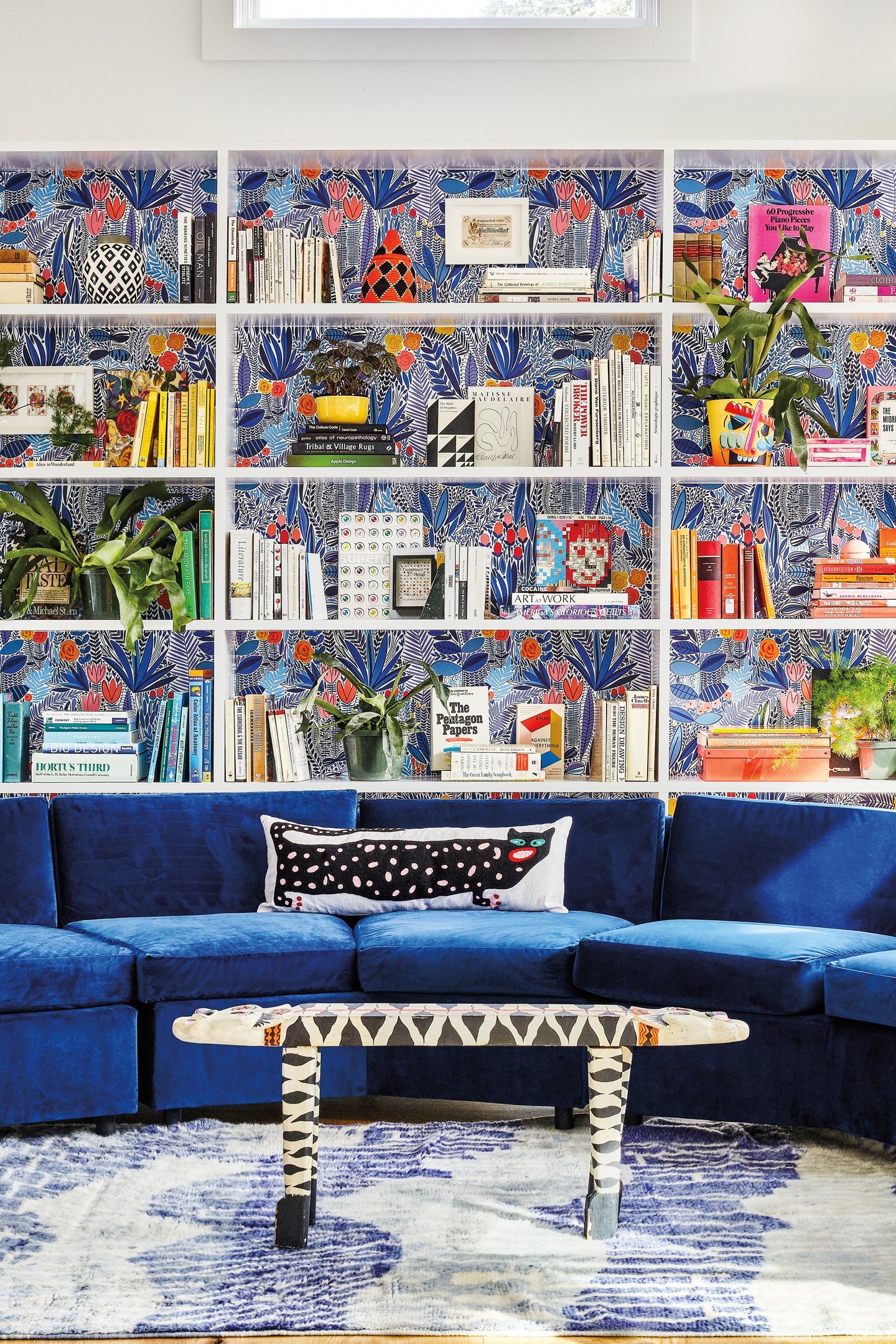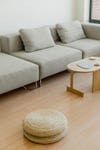Sofa Shopping for the Detail-Oriented: 4 Things a Salesperson Won’t Point Out
Couch surfing 101.
Updated Oct 11, 2018 6:39 PM
We may earn revenue from the products available on this page and participate in affiliate programs.
Most of us treat sofa shopping like buying a new mattress. When faced with a room full of cozy possibilities, we carefully weigh each option by plopping down and feeling out any flaws. And while we may think we’ve got the process down to a precise science, what we’re actually doing is speed dating on behalf of our living room. And as all serial daters well know, love at first sight isn’t necessarily a sign you should commit.
If you want to avoid a short-lived romance with your sofa, you’re going to have to go beyond good looks. After you’ve answered essential questions like “How long do I plan to have this piece?” and “Where is it going?” it’s time to move on to the tough questions like “Will this hardware hinder my next big move?” or “Can this upholstery withstand bleach?”
Fresh from debuting their new Nomad Collection, we asked Burrow cofounder and CEO Stephen Kuhl and head of design Evan Clabots to give us the lowdown on all the little details that go into making a “perfect” sofa. The brand’s original sofa recently underwent a slew of minuscule design changes in the name of comfort and lifestyle because, as it turns out, people do a whole lot more on their sofas than just sitting. Read on for four details to double-check before you commit to your next sofa.
Armrest Height
Consider napping a full-time job? The height of your armrest is the secret to a restful mid-afternoon snooze. “It’s a big ergonomic study,” says Clabots of the testing process. Too high and you wake up with a crooked neck. Too angular and you’ve got a day-long headache on your hands. “We found a sweet spot where it slopes from a hard edge on the outside of the arm to nice slope down to relieve any pressure points that might make contact with the back of the neck,” he continues.
So how can you be sure your sofa is nap-approved? Lay down and test it out (with and without a pillow). While everyone’s head is a little different, look out for a slim arm profile, rounded top, and a ledge that measures around 4.5 inches. The result is an arm that will cradle your neck and not leave you with a cramp.
Sound Hardware
Not all sofas are designed to withstand a nomadic lifestyle. While hardware isn’t as sexy as picking out fabric color, renters will be thankful for a sofa with sturdy leg plates, latches, and catches the next time their lease is up. “[Our original] leg plates were a very thick metal that had the possibility of bending with pressure over time,” says Kuhl. “That doesn’t mean it’s going to come apart by any means, but every time you take the sofa apart and put it back together, there’s a chance it could bend slightly since it’s naturally bent in the factory.”
To make the points of connection stronger, they opted for a thinner metal with a supportive, curved shape. “If you think about the [long history of] arches, there’s something to that structure that gives the material more strength. We created that shape in the [new] plate,” says Clabots.
Stain-Resistant Fabric
Fabric is a personal choice that’s often predetermined by style. For instance, a moss green velvet will exude a sense of casual sophistication, while a caramel-colored leather will lend itself to a mid-century-inspired setting. For those who care more about how their pets and children affect the look of the sofa, aesthetic falls short of staying power. A breathable fabric made from polypropylene, Clabots suggests, is a safe choice for pet owners and red wine lovers alike.
“It holds color really well because it doesn’t absorb outside moisture,” he explains. “Think of every piece of yarn like a carrot. A carrot is orange throughout. As you wear it down over time, it won’t change color.” In the inevitable case of a spill, even a bleach solution won’t strip the surface of its natural dye.
Layered Cushioning
When Burrow released its original sofa two years ago, its quest for durability boiled down to the cushions. “We wanted them to last a long time, so we used a really high-density, high-resiliency foam core,” shares Kuhl.
But because the cushions were being shipped in compression-sealed bags at the time, the foam was fairly stiff for the first week. The process of breaking in a new sofa isn’t all too different from a new pair of shoes—except one may directly affect your plans to Netflix binge. “We added what they call a crown on the top and bottom, which is a much softer kind of foam that creates a plush look,” continues Kuhl. The bonus buffer layer promises instant gratification. If you’re nervous about long-term or short-term comfort, the price is a subtle indication of how good your new sofa will feel from day one.
“I would say the mistake I hear people make the most is buying a sofa that looks like something they heard is really nice and maximizing their cost,” says Kuhl. “If you buy a $500 sofa that looks like a $2,000 [one], you’re going to know why it costs $500 when you sit on it.”
See more stories like this: Are Millennials Reviving This “Outdated” Sofa Style? 13 Sleeper Sofas That Were Made for Tight Quarters PSA: This Instagram-Famous Urban Outfitters Sofa Is Currently Half-Off




